In the holistic world of Ayurveda, the gut is often referred to as the cornerstone of health. A well-functioning digestive system is crucial for overall well-being, as it ensures that nutrients are absorbed efficiently and waste is eliminated effectively. Panchakarma, a traditional Ayurvedic detoxification and rejuvenation therapy, plays a pivotal role in supporting digestive health. It stimulates Agni (digestive fire), clears Ama (toxins), balances Prana (life force energy), and supports Ojas (vital essence). Here’s a deeper dive into how Panchakarma achieves these benefits and the protocols involved.
Stimulating Agni
In Ayurveda, Agni refers to the digestive fire responsible for the breakdown, absorption, and assimilation of food. A strong Agni is crucial for maintaining good health, as it ensures that the body is nourished and toxins are minimized. Panchakarma helps stimulate Agni through various treatments, directly enhancing digestive health.
Virechana (Purgation Therapy):
Protocol: Virechana involves administering purgative substances to cleanse the intestines.
Benefits: By removing excess Pitta from the body, Virechana improves digestive function and metabolic processes, reducing issues like acid reflux, indigestion, and inflammation.
Basti (Enema Therapy):
Protocol: Basti involves introducing herbal decoctions or oils into the colon.
Benefits: This treatment balances Vata dosha, which governs movement in the body, including the movement of food through the digestive tract. Basti enhances nutrient absorption and alleviates constipation, thereby improving overall digestive health.
Clearing Ama Durning Panchakarma
Ama, or toxins, are the undigested residues that accumulate in the body due to poor digestion and metabolism. These toxins can lead to various health issues if not eliminated. Panchakarma effectively clears Ama, ensuring a clean and efficient digestive system.
Vamana (Therapeutic Vomiting):
Protocol: Vamana involves induced vomiting to expel toxins from the upper gastrointestinal tract.
Benefits: This treatment primarily targets Kapha dosha, helping to remove mucus and toxins from the stomach and respiratory tract, thus clearing blockages and improving digestive efficiency.
Udwarthanam (Herbal Powder Massage):
Protocol: Udwarthanam is a vigorous massage using herbal powders.
Benefits: It stimulates the lymphatic system, promotes circulation, and facilitates the removal of toxins through the skin. This external detoxification supports internal digestive processes by reducing the toxin load on the body.
Balancing Prana Durning Panchakarma
Prana is the life force energy that governs respiration and the flow of energy throughout the body. Balanced Prana is essential for optimal gut health and overall vitality. Panchakarma helps in balancing Prana, which in turn supports digestive health.
Nasya (Nasal Administration):
Protocol: Nasya involves the administration of herbal oils or powders through the nostrils.
Benefits: By clearing the sinuses and enhancing respiratory function, Nasya balances Prana, which is closely linked to the function of the digestive system. Clear Prana pathways ensure that digestive organs receive proper energy flow, aiding efficient digestion.
Shirodhara (Oil Pouring on Forehead):
Protocol: Shirodhara involves a continuous stream of warm oil poured on the forehead.
Benefits: This treatment calms the nervous system, reduces stress, and balances Prana, thereby supporting digestive health by alleviating stress-related digestive issues like IBS and ulcers.
Supporting Ojas Durning Panchakarma
Ojas is the vital essence that represents the body’s immunity and overall vitality. Strong Ojas is indicative of good health, resilience, and a well-functioning immune system. Panchakarma supports Ojas through nourishment and rejuvenation, which is essential for a robust digestive system.
Abhyanga (Oil Massage):
Protocol: Abhyanga involves a full-body massage with warm herbal oils.
Benefits: This therapy nourishes the tissues, enhances circulation, and supports the body’s natural healing processes. By improving circulation, Abhyanga ensures that digestive organs are well-nourished and function optimally.
Swedana (Herbal Steam Therapy):
Protocol: Swedana involves herbal steam baths to induce sweating.
Benefits: By opening the pores and promoting sweating, Swedana aids in the elimination of toxins and enhances the absorption of therapeutic oils. This process supports Ojas by rejuvenating the body and maintaining a clean and efficient digestive system.
Comprehensive Panchakarma Protocol for Digestive Health
A typical Panchakarma protocol involves a series of preparatory, cleansing, and rejuvenating steps designed to optimize gut health and overall well-being:
Purva Karma (Preparatory Phase):
Procedures: Includes therapies like Abhyanga, Udwarthanam, and Swedana to prepare the body for detoxification.
Purpose: Loosens and mobilizes toxins, making them easier to eliminate and setting the stage for optimal digestive health.
Pradhana Karma (Main Detoxification Phase):
Procedures: Includes Vamana, Virechana, Basti, Nasya, and Raktamokshana.
Purpose: Eliminates toxins from the body, balances doshas, and stimulates Agni, ensuring a thorough detoxification and revitalization of the digestive system.
Paschat Karma (Post-Detoxification Phase):
Procedures: Includes dietary guidelines, herbal supplements, and lifestyle recommendations.
Purpose: Helps to rebuild and rejuvenate the body, ensuring the sustainability of the detoxification benefits and supporting long-term digestive health.
Panchakarma is a powerful Ayurvedic therapy that offers profound benefits for digestive health. By stimulating Agni, clearing Ama, balancing Prana, and supporting Ojas, Panchakarma ensures that the digestive system functions optimally, leading to improved overall health. Through a series of meticulously designed protocols, Panchakarma addresses the root causes of digestive issues, offering a holistic and sustainable approach to wellness.
Disclaimer
The sole purpose of these articles is to provide information about the tradition of Ayurveda. This information is not intended for use in the diagnosis, treatment, cure or prevention of any disease.






















